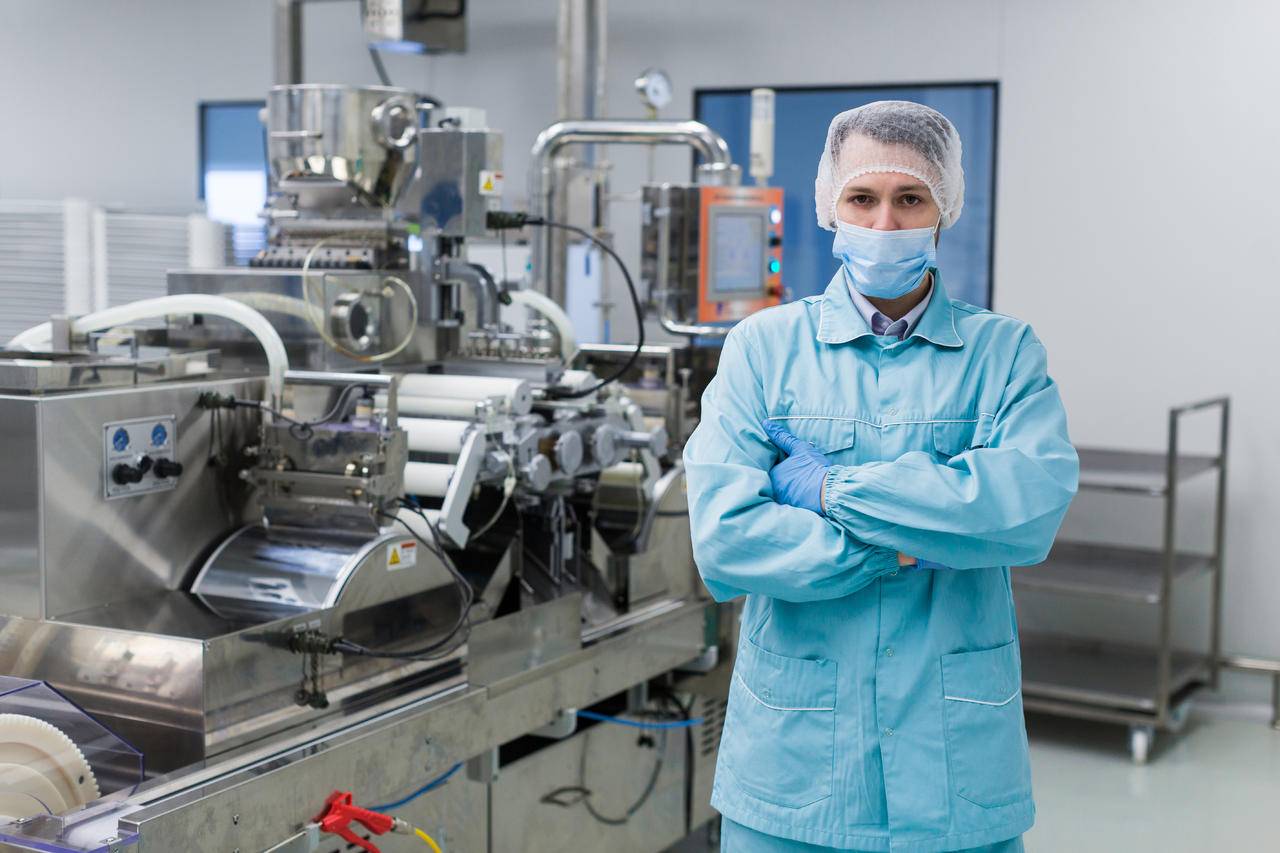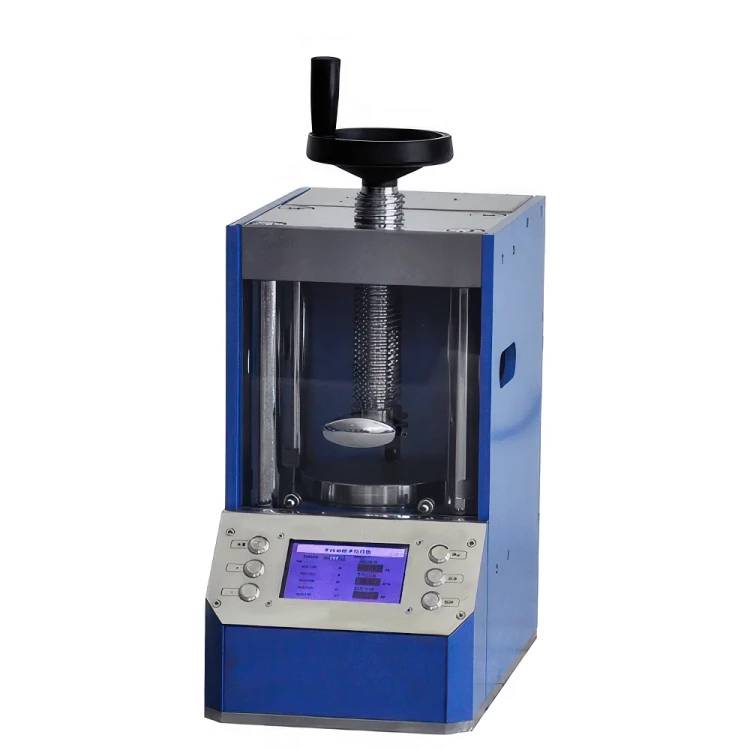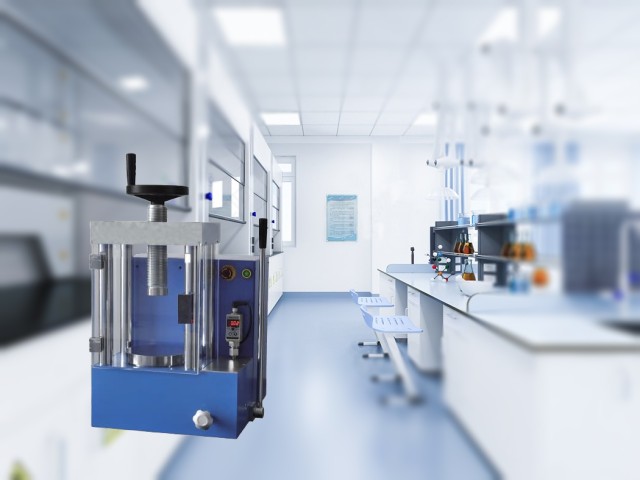Introduction
Hydraulic presses are essential tools in many laboratories, used for a range of applications such as sample preparation for chemical analysis, material testing, and pressing powders. However, like any other laboratory equipment, hydraulic presses pose significant risks to laboratory personnel, including pinch points, crushing, and amputations. Therefore, it is crucial to ensure workplace safety when using hydraulic presses in your lab. This blog post will explore the importance of workplace safety, the types of hydraulic presses commonly used in laboratories, the risks associated with their use, and the precautions to take before and during operation.
Table of Contents
Importance of Workplace Safety
In laboratory settings, workplace safety is of utmost importance, particularly when handling heavy-duty machinery like hydraulic presses. Hydraulic presses are used for various applications such as compression testing and molding, but they can be dangerous if not handled appropriately. Here are some reasons why workplace safety is crucial when using a hydraulic press in your lab:

Prevents Accidents and Injuries
Hydraulic presses generate high clamping pressure and heat which can result in accidents and injuries if not handled correctly. Workplace safety measures such as emergency stops, safety gates, and light curtains can prevent accidents caused by human error. Proper training of personnel who will be operating the hydraulic press can also minimize the risk of accidents.
Protects Personnel and Equipment
Workplace safety measures not only protect personnel but also the equipment being used in the laboratory. A clean and organized workspace around the hydraulic press prevents accidents and damage to the equipment. Regular inspection of the hydraulic press can identify any signs of wear or damage that could cause a safety hazard.
Ensures Compliance with Regulations
Workplace safety guidelines are set by regulatory bodies to ensure that personnel are protected from harm in the workplace. Compliance with these regulations is essential for the safety of personnel and the avoidance of penalties and fines.
Increases Efficiency
When personnel are trained on proper safety procedures and are aware of workplace safety guidelines, they can work more efficiently. This can also result in less downtime and fewer accidents or injuries, which can improve the overall productivity of the laboratory.
In conclusion, workplace safety is essential when using a hydraulic press in your laboratory. Proper installation, maintenance, and operation of the press, along with the use of safety features and personnel training, can help prevent accidents and injuries. It also protects personnel and equipment, ensures compliance with regulations, and increases efficiency in the laboratory.
Types of Laboratory Hydraulic Presses
Hydraulic presses are widely used in laboratory settings for various applications such as sample preparation, materials testing, and research development. There are several types of laboratory hydraulic presses available on the market, each with its own unique features and benefits. In this section, we will discuss the most common types of laboratory hydraulic presses.

Manual Hydraulic Press
One type of laboratory hydraulic press is the manual hydraulic press, which is operated by hand and is ideal for smaller applications. Manual hydraulic presses typically consist of a cylinder filled with hydraulic oil that supplies pressure to a moving piston. The pressure is applied using a hand-operated pump. The material to be compressed is placed on the piston which is then slowly raised to apply a force to the material. Powder materials are usually contained in a pellet die which causes the compressed powder to form a solid disc of material.
Electric Hydraulic Press
Another type of laboratory hydraulic press is the electric hydraulic press, which is powered by electricity and is capable of handling larger loads. Electric hydraulic presses are more expensive than manual hydraulic presses, but they offer greater accuracy and precision. They are also easier to use and require less physical effort.
Pharmaceutical Hydraulic Press
There are also hydraulic presses that are designed specifically for use in the pharmaceutical industry, with features such as stainless steel construction and clean room compatibility. These presses are used for manufacturing tablets and other pharmaceutical products in a sterile environment.
Automatic Hydraulic Press
An automatic hydraulic press works by using a pump to elevate a piston, which holds air or liquid pressure. Unlike a manual press, the piston is controlled by a switch or automated controller. This means they can be controlled to a high accuracy and repeatability; the pressure will be the same every time. Automatic hydraulic presses are much easier to use than manual presses and offer greater accuracy and precision.
Hydraulic Mini Press
A hydraulic mini press is a small, portable press that uses hydraulic power to produce force. It works by using pressure generated by a pump to move an oil-filled plunger, which in turn compresses fluids or gases to exert force on an object. Mini hydraulic presses typically only weigh about 4 kilos, but are still capable of applying around 2 tons of pressure. They are commonly used in pharmaceutical labs, where hand-held, low-cost, and mobile solutions are preferred.
When selecting a hydraulic press for your lab, it is important to consider factors such as load capacity, operating speed, and overall durability. By choosing the right type of hydraulic press for your needs, you can ensure a safe and efficient work environment for you and your employees.
Risks Associated with Using Hydraulic Presses
Hydraulic presses are powerful tools that are commonly used for material testing, sample preparation, and production in laboratory settings. However, their use also poses several risks to laboratory workers. Here are some of the main risks associated with using hydraulic presses and how to mitigate them:
Crushing Injuries
Hydraulic presses can exert an enormous amount of force, and if a worker's hand or other body part gets caught between the press and the die, it can result in a crushing injury. To prevent such injuries, workers should never place their hands or any other body parts inside the press while it is in operation. They should also avoid leaning over the press and keep their hands away from the dies and moving parts.
Pinching Injuries
Another common risk associated with hydraulic presses is pinching injuries. These injuries can occur when a worker's hand or other body part gets caught between the dies or other moving parts of the press. To prevent pinching injuries, workers should always wear appropriate PPE, such as gloves, when operating the press. They should also make sure that the press is properly secured and that the dies are properly aligned.
Puncturing Injuries
Hydraulic presses can also pose a risk of puncturing injuries. These injuries can occur if a worker's skin is punctured by a sharp object, such as a broken piece of metal or a stray wire. To prevent puncturing injuries, workers should always wear appropriate PPE, such as safety glasses, when operating the press. They should also make sure that the press is properly maintained and inspected regularly to prevent any sharp objects from becoming a hazard.
Electrical and Mechanical Hazards
Hydraulic presses can also pose electrical and mechanical hazards if they are not properly maintained. Electrical hazards can occur if the press is improperly grounded or if there is a short circuit. Mechanical hazards can occur if the press is not properly maintained and inspected regularly, which can result in parts breaking or malfunctioning. To prevent these hazards, workers should always follow the manufacturer's instructions and safety guidelines for the press. They should also make sure that the press is properly maintained and inspected regularly by a qualified technician.
In conclusion, hydraulic presses are powerful tools that can pose serious risks to laboratory workers if not handled with care. By following the manufacturer's instructions and safety guidelines, wearing appropriate PPE, and ensuring that the press is properly maintained and inspected regularly, workers can minimize the risks associated with using hydraulic presses and ensure a safe and productive work environment.

Precautions to Take Before and During Operation
Before operating a hydraulic press in your lab, it is crucial to take certain precautions to ensure workplace safety. Here are some steps to follow:
Step 1: Inspect the Hydraulic Press
Inspect the hydraulic press to ensure that all parts are in good condition and that there are no leaks or malfunctioning components. Check the condition of the o-rings and replace them if necessary. Ensure that the press is properly grounded.
Step 2: Wear Appropriate Personal Protective Equipment
Wear appropriate personal protective equipment, including gloves, safety glasses, and a lab coat. This will protect you from any potential hazards that may arise during the operation.
Step 3: Properly Align the Press
Ensure that the press is properly aligned before operation. Misalignment can cause serious accidents and damage to the equipment. Make sure that the mold or die is correctly placed and that the material to be compressed is centered and secured.
Step 4: Follow the Manufacturer's Instructions
It is crucial to follow the manufacturer's instructions when operating the hydraulic press. Never exceed the maximum load capacity as it can lead to equipment damage or even injury. Keep the pressure at the recommended level and be sure to use the correct mold or die for the material being compressed.
Step 5: Never Leave the Press Unattended
Never leave the press unattended while it is in operation. Always keep your hands and other body parts away from the pressing area. If any issues arise during use, such as unusual noises or leaks, immediately stop the press and address the problem before continuing.
Step 6: Address Any Issues Immediately
If any issues arise during use, such as unusual noises or leaks, immediately stop the press and address the problem before continuing. Do not attempt to fix the problem yourself if you are not trained to do so.
Step 7: Clean and Maintain the Press Regularly
Clean and maintain the hydraulic press regularly to ensure that it operates safely and efficiently. Keep the workspace clean and free of debris. Check the oil level regularly and replace it if necessary.
In conclusion, taking precautions before and during the operation of a hydraulic press in your lab is crucial to ensure workplace safety. By following the steps outlined above, you can minimize the risk of accidents or injuries and ensure that the equipment operates safely and efficiently.
Proper Use of Personal Protective Equipment (PPE)
When using a hydraulic press in your lab, it is crucial to prioritize safety to prevent any accidents or injuries. One of the most important safety measures is the proper use of personal protective equipment (PPE).
Availability and Condition of PPE
Before using the hydraulic press, ensure that all PPE is readily available and in good condition. This includes goggles, gloves, and protective clothing. When selecting PPE, ensure that it is appropriate for the task at hand.
Wearing PPE
When operating the machine, wear the appropriate PPE to protect your eyes, hands, and body from any potential hazards. It is also essential to ensure that the PPE fits well and is comfortable to wear, as this will encourage compliance and reduce the likelihood of accidents.
Inspecting and Replacing PPE
Regularly inspect and replace any damaged PPE to ensure that it continues to provide adequate protection. If any PPE becomes damaged during use, it should be replaced immediately. Proper maintenance and replacement of PPE is crucial to ensuring the safety of lab personnel.
Compliance with Safety Procedures
In addition to using PPE, it is important to comply with all safety procedures when using a hydraulic press. Follow all manufacturer instructions and safety guidelines to minimize the risk of accidents. Do not operate the machine if you are not trained to do so, and always work with a partner.
By following these simple steps and prioritizing the use of PPE, you can help ensure a safe and accident-free workplace when using a hydraulic press in your laboratory. Proper use of PPE not only protects personnel but also helps to prolong the lifespan of the equipment. Remember that safety should always be the top priority when working with laboratory equipment.
How to Properly Maintain a Hydraulic Press
Maintaining a hydraulic press is essential for ensuring its safe and efficient operation. Here are some key steps to follow:
Regular Inspection
Regularly inspecting the hydraulic press is crucial for identifying any potential issues before they become serious problems. This includes checking for any leaks, cracks, or damage to the equipment. It is important to inspect the hydraulic hoses, couplings, and fittings for any signs of wear and tear. Additionally, it is important to inspect the oil level and quality, and to replace the oil as needed.
Proper Lubrication
Regularly lubricating the hydraulic press is essential to prevent wear and tear and ensure smooth operation. This includes lubricating the moving parts of the press, such as the piston, cylinders, and guide rails. It is important to use the correct type of lubricant and to follow the manufacturer's instructions.
Regular Cleaning
Regularly cleaning the hydraulic press is important for removing any dirt, debris, or other contaminants that can cause damage to the equipment. This includes wiping down the press with a clean, dry cloth and using a vacuum to remove any debris from the press.
Proper Use of Accessories and Tools
Using the proper accessories and tools for the hydraulic press is important for ensuring its safe and efficient operation. This includes using the correct size and type of tools for the job, as well as following the manufacturer's instructions for use.
Operator Training
Providing proper training to all personnel who will be operating the hydraulic press is critical for ensuring workplace safety. This includes understanding the safety features and procedures in case of an emergency. Operators should be trained on how to properly use the equipment, how to identify potential hazards, and how to respond to emergencies.
Regular Maintenance
In addition to regular inspections and cleaning, it is important to perform regular maintenance on the hydraulic press. This includes checking and adjusting the hydraulic fluid pressure, testing the safety features, and replacing any worn or damaged parts. It is important to follow the manufacturer's instructions for maintenance and to keep a record of all maintenance activities.
By following these guidelines, laboratory personnel can ensure that their hydraulic press is properly maintained and safe to use. Regular inspections, proper lubrication, regular cleaning, proper use of accessories and tools, operator training, and regular maintenance are all critical components of ensuring the safe and efficient operation of a hydraulic press.
Conclusion
In conclusion, hydraulic presses are essential equipment in laboratories but their use can present significant risks if not handled properly. It's important to understand the types of hydraulic presses and the potential risks associated with their use. Before and during operation, it's important to take precautions like proper use of PPE and ensuring the hydraulic press is well-maintained. Remember, workplace safety is a shared responsibility and everyone should be aware of the potential risks and take steps to prevent accidents. By following the guidelines outlined in this post, you can ensure the safe use of hydraulic presses in your laboratory.
Related Products
- Laboratory Manual Hydraulic Pellet Press for Lab Use
- Manual Lab Heat Press
- 24T 30T 60T Heated Hydraulic Press Machine with Heated Plates for Laboratory Hot Press
- Heated Hydraulic Press Machine with Heated Plates Split Manual Laboratory Hot Press
- Heated Hydraulic Press Machine with Integrated Manual Heated Plates for Lab Use
Related Articles
- Why Your Lab Pellets Crack: The Hidden Physics of a Perfect Press
- Comprehensive Guide to Manual Hydraulic Pellet Press
- Manual Hydraulic Presses for Laboratory Use: A Comprehensive Guide
- Operating of Automatic Lab xrf Pellet Press
- Hydraulic Tablet Press: Comprehensive Guide to Design, Operation, and Applications














